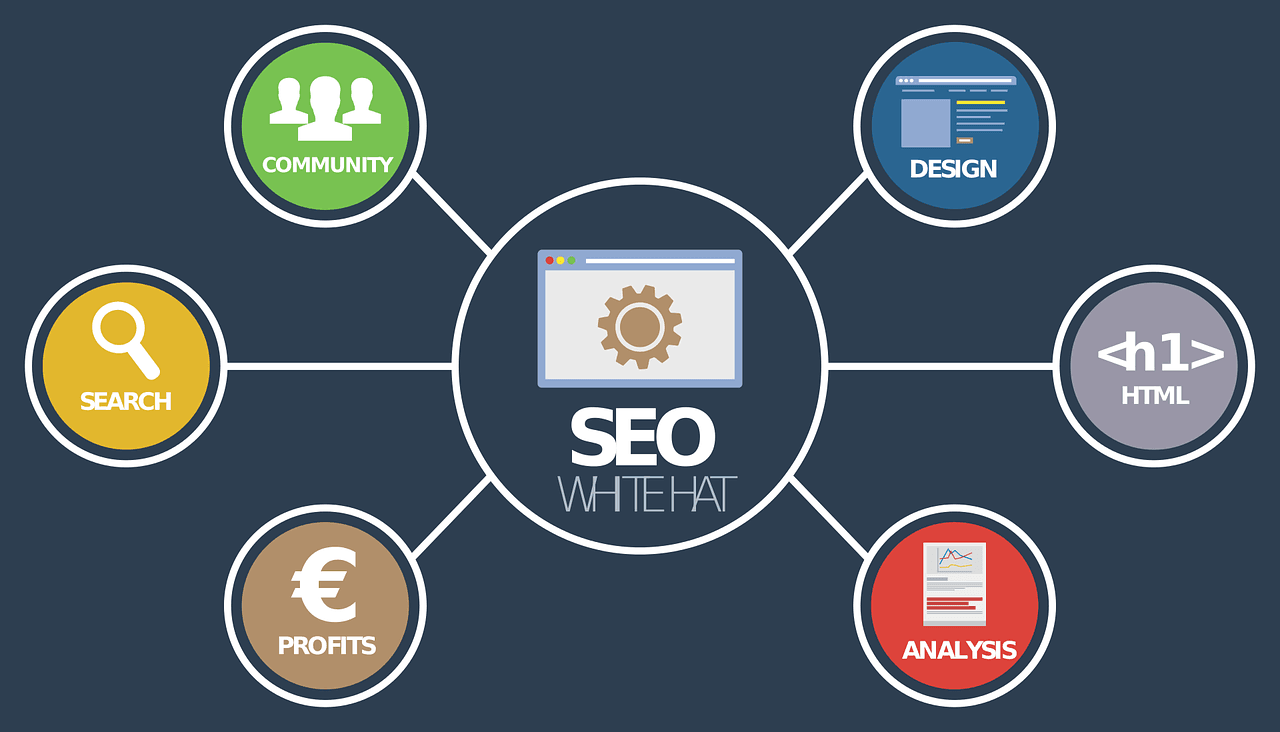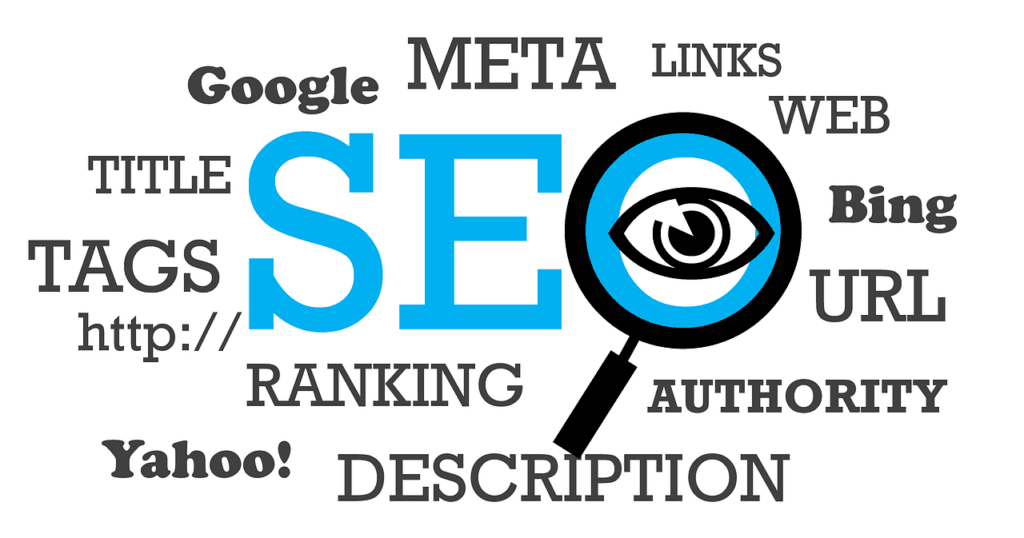This Article has been revised, edited and added to, by Poulomi Chakraborty.
- Audience Behavior and Intent: A Fundamental Difference
- Keyword Research: Targeting the Right Terms
- Content Creation: Crafting Relevant and Engaging Material
- Link Building: Strategies and Approaches
- Technical SEO: Ensuring a Solid Foundation
- Analytics and Performance Tracking: Measuring Success
- Conclusion: Tailoring SEO for B2C and B2B Success
SEO (Search Engine Optimization) is a crucial digital marketing strategy for both B2C (Business-to-Consumer) and B2B (Business-to-Business) websites. While the fundamental principles of SEO apply to both, the strategies and tactics often diverge due to the distinct nature of their target audiences, sales cycles, and marketing goals. Understanding these differences is essential for creating effective SEO strategies tailored to each type of business. In this article, we will explore how SEO differs for B2C and B2B websites, examining key areas where these distinctions manifest and providing actionable insights to optimize your SEO efforts.
Audience Behavior and Intent: A Fundamental Difference

One of the primary differences between B2C and B2B SEO lies in audience behavior and search intent. B2C customers are typically individual consumers looking for products or services to meet their personal needs or desires. Their search behavior is often driven by immediate needs, emotional triggers, and the desire for quick solutions.
B2B customers, on the other hand, are businesses seeking solutions to enhance their operations, improve efficiency, or gain a competitive edge. Their search behavior is more methodical, driven by long-term goals, and involves multiple stakeholders.
B2C Audience Behavior
B2C audiences are diverse and their search queries can range from highly specific product searches to broad queries seeking information or inspiration. For instance, a consumer might search for “best running shoes for flat feet” or “how to style a denim jacket.”
These searches are often impulsive, driven by immediate needs or desires, and influenced by trends, reviews, and recommendations.
To capture the attention of B2C audiences, SEO strategies must focus on understanding and catering to these varied intents. This involves creating engaging and persuasive content that addresses the specific needs and desires of the target audience.
Product pages, blog posts, how-to guides, and visually appealing content such as videos and infographics are effective in capturing B2C attention.
B2B Audience Behavior
B2B audiences approach search with a different mindset. They often conduct extensive research before making purchasing decisions, seeking detailed information about products or services, their benefits, and their potential impact on their business.
A B2B customer might search for “enterprise project management software comparison” or “benefits of cloud-based accounting systems.” These searches are driven by the need for thorough understanding and long-term solutions.
For B2B websites, SEO strategies must focus on providing in-depth, informative, and authoritative content. Whitepapers, case studies, industry reports, and detailed product descriptions are essential in meeting the informational needs of B2B customers. The content should demonstrate expertise, build trust, and address the specific pain points and goals of the business audience.
Content Strategy: Tailoring to Different Needs
Content is the cornerstone of SEO, and the type of content that resonates with B2C and B2B audiences can vary significantly. Understanding these differences is crucial for developing a content strategy that aligns with the unique needs of each audience.
B2C Content Strategy
In the B2C space, content needs to be engaging, relatable, and often entertaining. The goal is to capture the consumer’s interest quickly and provide them with the information they need in an easily digestible format.
Content that evokes emotions, tells a story, or provides practical tips tends to perform well. Visual content, such as high-quality images, videos, and infographics, is particularly effective in attracting and retaining B2C customers.
Product descriptions should be compelling and highlight key features and benefits. User-generated content, such as reviews and testimonials, plays a significant role in influencing purchasing decisions. Blog posts, how-to guides, and lifestyle articles can drive organic traffic and engage potential customers at different stages of their buying journey.
B2B Content Strategy
For B2B websites, content needs to be more informative, detailed, and geared towards building authority. The decision-making process in B2B transactions is often longer and involves multiple stakeholders.
Therefore, the content must provide comprehensive information and address the concerns of different decision-makers within a business.
Whitepapers, eBooks, and case studies are valuable content formats for B2B audiences. They provide in-depth insights and data that help businesses make informed decisions.
Webinars, industry reports, and expert interviews can also enhance credibility and showcase thought leadership. Detailed product pages that explain features, benefits, and technical specifications are essential for helping potential buyers understand how the product or service can meet their needs.
Keyword Research: Targeting the Right Terms

Keyword research is a foundational aspect of SEO that differs significantly between B2C and B2B websites. The approach to identifying and targeting keywords must reflect the distinct search behaviors and needs of each audience.
B2C Keyword Research
In B2C SEO, keyword research focuses on understanding consumer behavior and the language they use when searching for products or services. B2C keywords often include a mix of product-specific terms, brand names, and broader search queries related to lifestyle, trends, and needs.
These keywords tend to be more competitive due to the large volume of searches and the broad range of consumer interests.
Understanding Consumer Intent
B2C keyword research begins with understanding consumer intent. This involves identifying what potential customers are looking for and why. Tools like Google Keyword Planner, Ahrefs, and SEMrush can provide valuable insights into search volumes, competition levels, and related keywords.
By analyzing these data points, businesses can identify high-traffic, low-competition keywords that align with their products and services.
Long-tail keywords are particularly important in B2C SEO. These are longer, more specific search phrases that often indicate a higher intent to purchase. For example, instead of targeting the broad keyword “running shoes,” a B2C site might focus on “best running shoes for flat feet.”
Long-tail keywords are less competitive and more likely to attract customers who are closer to making a purchase.
Seasonal and Trend-Based Keywords
Another important aspect of B2C keyword research is identifying seasonal and trend-based keywords. Consumer interests can vary throughout the year, influenced by holidays, seasons, and trends. For instance, searches for “Halloween costumes” spike in the months leading up to October, while “summer dresses” become popular in spring and early summer.
Keeping an eye on trends using tools like Google Trends can help B2C businesses capitalize on these shifts in consumer behavior. Creating content around trending topics and seasonal needs can drive significant traffic during peak times.
B2B Keyword Research
B2B keyword research, on the other hand, requires a deeper understanding of industry-specific terminology and the complex decision-making processes of businesses.
B2B keywords often include technical terms, product categories, and solution-oriented phrases. These keywords are typically less competitive but require a higher level of expertise to rank for effectively.
Industry and Niche Focus
B2B keyword research focuses on industry-specific terms and niche markets. This involves identifying the keywords that potential clients use when looking for solutions, services, or products within a particular industry. Tools like SEMrush and Ahrefs can help uncover these keywords, providing data on search volumes, keyword difficulty, and the competitive landscape.
Understanding the specific needs and pain points of your target industry is crucial. For example, a B2B company selling project management software might target keywords like “best project management tools for construction” or “enterprise project management solutions.”
These keywords reflect the specialized needs of their target audience and position the company as an expert in their niche.
Intent-Based Keywords
B2B keywords often reflect different stages of the buyer’s journey, from initial research to final decision-making. Identifying keywords that align with these stages can help create content that guides potential clients through their decision-making process.
For example, early-stage keywords might include “what is project management software,” while mid-stage keywords could be “benefits of project management tools.” Late-stage keywords might focus on comparisons and reviews, such as “project management software comparison” or “best project management tools 2024.”
Creating content that addresses these different stages helps attract a wider range of potential clients and supports them throughout their buying journey.
Integrating Keywords into Content
Once you have identified the right keywords for your B2C or B2B audience, integrating them into your content is crucial for SEO success. This involves using keywords naturally within titles, headings, and body text, ensuring that the content remains engaging and valuable to readers.
For B2C websites, integrating keywords into product descriptions, blog posts, and how-to guides can help attract consumers searching for specific products or solutions. For B2B websites, keywords should be incorporated into whitepapers, case studies, and detailed product pages, providing the depth of information that business clients seek.
Content Creation: Crafting Relevant and Engaging Material

Content creation is at the heart of any successful SEO strategy, and the type of content that resonates with B2C and B2B audiences can vary significantly. Each audience has different expectations, informational needs, and decision-making processes, which must be reflected in the content you produce.
B2C Content Creation
In the B2C space, content needs to be engaging, relatable, and often entertaining. Consumers are looking for content that not only informs but also inspires and entertains. The content should address immediate needs, answer common questions, and provide solutions that enhance the consumer’s lifestyle or solve a problem.
Types of B2C Content
B2C content is diverse and can take many forms. Blog posts are essential for driving organic traffic and can cover a wide range of topics, from product reviews and buying guides to lifestyle tips and trend reports.
These posts should be written in a conversational tone and be easy to read, with plenty of visuals to break up the text and keep readers engaged.
Product descriptions are another critical component of B2C content. They should be detailed and compelling, highlighting the features and benefits of the product while addressing any potential questions or concerns a customer might have.
High-quality images and videos can enhance product descriptions, providing a better sense of what the product looks like and how it can be used.
Social media content is also vital for B2C businesses. Platforms like Instagram, Facebook, and Pinterest are perfect for sharing visually appealing content that showcases products, shares customer stories, and engages with the audience.
Social media is an excellent channel for running promotions, sharing user-generated content, and building a community around your brand.
Emotional and Persuasive Content
B2C content often taps into emotions to persuade consumers. Storytelling is a powerful tool in this regard, allowing you to create a narrative around your brand and products that resonates with your audience.
Highlighting customer testimonials, success stories, and user experiences can build trust and encourage potential customers to make a purchase.
Promotional content, such as special offers, discounts, and limited-time deals, can also drive engagement and sales. This type of content creates a sense of urgency and can be particularly effective when paired with visually appealing graphics and clear calls to action.
B2B Content Creation
Content for B2B audiences needs to be more in-depth, informative, and geared towards building authority. B2B buyers are looking for content that provides detailed insights, technical information, and demonstrates thought leadership.
The decision-making process in B2B transactions is typically longer and involves multiple stakeholders, so the content must cater to these factors.
Types of B2B Content
Whitepapers and eBooks are cornerstone content types for B2B websites. These long-form pieces provide comprehensive insights into industry trends, best practices, and in-depth analyses that help businesses make informed decisions.
They are excellent for generating leads, as they often require users to provide contact information in exchange for access.
Case studies showcase how your products or services have successfully solved problems for other businesses. They provide real-world examples and data that demonstrate your expertise and the tangible benefits of your offerings. Case studies are particularly persuasive because they provide proof of your capabilities.
Webinars and podcasts allow you to engage directly with your audience, offering a platform for discussing industry trends, providing training, or showcasing your expertise. These formats enable interactive learning and can position your business as a thought leader.
Industry reports and research papers provide valuable data and insights that can inform decision-making. By conducting original research and sharing your findings, you can establish your brand as a credible source of information in your industry.
Educational and Authoritative Content
B2B content needs to be authoritative and educational. It should address the specific pain points and needs of your target audience, providing them with the information they need to make informed decisions. This involves creating content that is not only accurate and detailed but also actionable.
Technical content, such as detailed product specifications, implementation guides, and user manuals, is crucial for B2B audiences. This type of content helps potential buyers understand how your product works and how it can be integrated into their existing systems.
Thought leadership content, such as opinion pieces, expert interviews, and commentary on industry trends, helps build your brand’s authority and credibility. By sharing your expertise and insights, you can position your business as a leader in your field.

Link Building: Strategies and Approaches
Link building is a crucial element of SEO, involving the acquisition of hyperlinks from other websites to your own. These links, or backlinks, are important for driving referral traffic and improving your website’s authority and search engine rankings. However, the strategies for building links differ significantly between B2C and B2B websites due to their different audiences, content types, and industry landscapes.
B2C Link Building
In the B2C space, link building often revolves around creating engaging, shareable content that appeals to a broad audience. The goal is to attract links naturally through content that people find interesting, useful, or entertaining.
Content-Driven Link Building
One of the most effective strategies for B2C link building is creating high-quality, shareable content. This includes blog posts, infographics, videos, and interactive content such as quizzes and polls. Content that resonates with your audience is more likely to be shared on social media, linked to by other blogs, and referenced in articles.
Visual content, in particular, can be a powerful tool for B2C link building. Infographics, for example, can present data in a visually appealing and easily digestible format, making them highly shareable. Videos that demonstrate products, share customer stories, or provide how-to guides can also attract a lot of engagement and links.
Influencer Collaborations
Influencer marketing plays a significant role in B2C link building. Collaborating with influencers in your industry can help you reach a wider audience and acquire high-quality backlinks. Influencers can create content featuring your products, write reviews, or share their experiences with their followers, generating buzz and driving traffic to your site.
When selecting influencers, it’s important to choose those who align with your brand values and have a genuine connection with your target audience. Authenticity is key, as consumers are more likely to trust and engage with content that feels genuine and relatable.
Social Media and Community Engagement
Social media platforms are excellent channels for promoting your content and acquiring links. By sharing your content on social media, you can reach a broader audience and encourage shares and backlinks.
Engaging with online communities, such as forums and discussion boards related to your industry, can also help you build relationships and acquire links.
Participating in community discussions, offering helpful advice, and sharing your content where appropriate can establish your brand as a trusted resource and encourage others to link to your site.
B2B Link Building
B2B link building strategies often involve building relationships within the industry and creating authoritative, data-driven content that appeals to other businesses and industry experts. The focus is on acquiring high-quality backlinks from reputable sources that can boost your site’s authority and credibility.
Industry Publications and Guest Blogging
Publishing content on industry-specific websites and blogs is a key strategy for B2B link building. By contributing guest posts, articles, and thought leadership pieces to reputable industry publications, you can gain valuable backlinks and establish your brand as an authority in your field.
Guest blogging allows you to share your expertise with a wider audience and build relationships with other thought leaders and influencers in your industry. When writing guest posts, ensure that the content is high-quality, informative, and relevant to the publication’s audience.
Research and Data-Driven Content
Creating original research and data-driven content can significantly enhance your B2B link building efforts. Businesses and industry professionals often seek out data and insights to inform their decisions, and providing this information can attract links from other reputable sources.
Whitepapers, industry reports, and case studies that present original research and data are particularly effective for B2B link building. These types of content are often cited by other websites, blogs, and publications, generating high-quality backlinks.
Building Relationships and Networking
Networking and building relationships within your industry are crucial for B2B link building. By establishing connections with other businesses, industry experts, and influencers, you can create opportunities for collaboration and link acquisition.
Participating in industry events, conferences, and webinars can help you build these relationships. Engaging with your industry peers on social media, sharing their content, and providing valuable insights can also strengthen your network and lead to link building opportunities.
Leveraging PR and Media Outreach
Public relations (PR) and media outreach are effective strategies for acquiring high-quality backlinks in the B2B space. By pitching your stories, news, and insights to journalists, bloggers, and industry publications, you can gain coverage and backlinks from reputable sources.
When conducting media outreach, it’s important to tailor your pitches to the interests and needs of each publication. Providing compelling stories, expert opinions, and valuable insights can increase your chances of securing media coverage and acquiring backlinks.
Technical SEO: Ensuring a Solid Foundation

Technical SEO is the backbone of a successful SEO strategy. It involves optimizing the technical aspects of a website to ensure it is accessible, easy to navigate, and performs well in search engine rankings. While the principles of technical SEO apply to both B2C and B2B websites, the specific strategies and priorities can differ.
B2C Technical SEO
For B2C websites, technical SEO focuses on providing a seamless user experience, ensuring fast load times, and making the site mobile-friendly. These elements are crucial for keeping consumers engaged and reducing bounce rates.
Site Speed and Performance
Site speed is a critical factor for B2C websites. Consumers expect fast-loading pages, and any delay can lead to higher bounce rates and lower engagement. Optimizing images, minimizing the use of heavy scripts, and leveraging browser caching are essential techniques to enhance site speed.
Tools like Google PageSpeed Insights and GTmetrix can help identify performance issues and provide recommendations for improvement. Regularly monitoring and optimizing site speed ensures that your website remains competitive and user-friendly.
Mobile Optimization
With the increasing use of mobile devices for online shopping, having a mobile-friendly website is imperative for B2C businesses. Google’s mobile-first indexing means that the mobile version of your site is considered the primary version for ranking purposes.
A responsive design ensures that your site adjusts seamlessly to different screen sizes, providing a consistent and enjoyable user experience across all devices. Testing your site on various mobile devices can help identify and fix any usability issues, such as small buttons, hard-to-read text, or slow load times.
Secure Sockets Layer (SSL) and HTTPS
Security is another critical aspect of technical SEO for B2C websites. An SSL certificate encrypts data transmitted between your website and users, protecting sensitive information such as payment details and personal data. Websites with HTTPS are also prioritized by search engines, as they offer a secure browsing experience.
Implementing SSL and ensuring that all pages on your site use HTTPS can enhance security, build trust with consumers, and improve your search engine rankings. Most hosting providers offer SSL certificates, and setting up 301 redirects from HTTP to HTTPS ensures that your site remains accessible and secure.
B2B Technical SEO
For B2B websites, technical SEO involves optimizing for a professional audience that values detailed information, security, and reliability. The technical aspects must support the complex decision-making process of B2B buyers.
Site Structure and Navigation
B2B websites often contain a wealth of information, including whitepapers, case studies, product pages, and blog posts. A clear and logical site structure is essential for helping users find the information they need quickly and easily.
Using a hierarchical structure with well-organized categories and subcategories helps both users and search engines navigate your site. Breadcrumbs, internal linking, and an intuitive menu design can further enhance navigation and user experience.
Schema Markup
Schema markup, or structured data, helps search engines understand the content of your site more effectively. For B2B websites, implementing schema markup can enhance search results with rich snippets, providing additional information such as product details, reviews, and business information.
Rich snippets can improve click-through rates by making your search listings more informative and visually appealing. Tools like Google’s Structured Data Markup Helper can assist in adding schema markup to your site, ensuring that your content is well-understood by search engines.
Canonical Tags and Duplicate Content
B2B websites often have multiple pages with similar or identical content, such as product descriptions or technical specifications. Managing duplicate content is crucial for maintaining a clean and effective site structure.
Canonical tags help search engines understand which version of a page should be indexed, preventing duplicate content issues. Ensuring that canonical tags are correctly implemented can improve your site’s SEO by consolidating link equity and avoiding content duplication penalties.
XML Sitemaps and Robots.txt
XML sitemaps and robots.txt files are essential tools for technical SEO. An XML sitemap provides a roadmap of your site’s pages, helping search engines crawl and index them efficiently. Regularly updating your XML sitemap ensures that new and updated content is indexed promptly.
The robots.txt file instructs search engines on which pages to crawl and which to exclude. Properly configuring this file can help manage crawl budget and ensure that search engines focus on your most important pages.
Secure Sockets Layer (SSL) and HTTPS
Security is equally important for B2B websites, especially given the sensitivity of business data and transactions. An SSL certificate encrypts data, protecting it from potential breaches and building trust with your audience. Search engines also prioritize secure sites, making HTTPS an important factor for rankings.
Implementing SSL and ensuring that your entire site uses HTTPS can enhance security, improve search engine rankings, and build trust with potential clients. Regularly updating and monitoring your security protocols is essential for maintaining a secure and trustworthy website.
Analytics and Performance Tracking: Measuring Success

Tracking the performance of your SEO efforts is crucial for understanding what’s working, what needs improvement, and how you can refine your strategies. Analytics and performance tracking provide the insights necessary to make data-driven decisions and optimize your SEO campaigns for better results. While both B2C and B2B websites require robust analytics, the specific metrics and approaches can vary.
B2C Analytics and Performance Tracking
For B2C websites, performance tracking focuses on metrics that reflect consumer behavior, engagement, and conversion rates. Understanding these metrics helps you tailor your content, design, and marketing strategies to meet the needs of your audience.
Key Metrics for B2C
One of the most important metrics for B2C websites is organic traffic. Monitoring the number of visitors who arrive at your site through search engines provides insight into the effectiveness of your SEO efforts.
Tools like Google Analytics offer detailed reports on organic traffic, allowing you to see which pages are attracting the most visitors and which keywords are driving that traffic.
Conversion rate is another critical metric. This measures the percentage of visitors who complete a desired action, such as making a purchase, signing up for a newsletter, or filling out a contact form. Understanding your conversion rate helps you assess the effectiveness of your calls to action and the overall user experience.
Bounce rate is a measure of the percentage of visitors who leave your site after viewing only one page. A high bounce rate can indicate that your content is not engaging or that your site is difficult to navigate. Lowering your bounce rate by improving site design, content quality, and load times can enhance user experience and boost SEO performance.
Average session duration and pages per session provide insights into how engaged your visitors are. These metrics show how long visitors stay on your site and how many pages they view per visit. Higher values typically indicate that visitors find your content valuable and are exploring your site more thoroughly.
Tools for B2C Analytics
Google Analytics is a powerful tool for tracking B2C website performance. It offers a wide range of reports and metrics that can help you understand user behavior, track conversions, and measure the effectiveness of your SEO efforts.
Setting up goals in Google Analytics allows you to track specific actions, such as purchases or sign-ups, providing deeper insights into your site’s performance.
Other tools like Google Search Console can provide valuable data on how your site is performing in search results. It offers insights into keyword rankings, click-through rates, and indexing issues, helping you identify and address any problems that might be affecting your SEO.
B2B Analytics and Performance Tracking
For B2B websites, performance tracking often involves metrics that reflect the longer sales cycles and complex decision-making processes typical of B2B transactions. These metrics help you understand how potential clients interact with your site and progress through the sales funnel.
Key Metrics for B2B
Organic traffic remains a key metric for B2B websites. Monitoring the number of visitors arriving through search engines can help you assess the effectiveness of your SEO strategies. Understanding which pages and keywords are driving traffic can inform your content creation and optimization efforts.
Lead generation metrics are particularly important for B2B websites. This includes tracking the number of form submissions, whitepaper downloads, and contact requests. These actions indicate that visitors are interested in your offerings and are moving closer to becoming clients.
Engagement metrics such as average session duration and pages per session provide insights into how deeply visitors are engaging with your content. B2B buyers often spend more time researching and comparing options, so higher engagement metrics can indicate that your content is meeting their informational needs.
Conversion rate is also crucial for B2B websites, though it may be measured differently than for B2C sites. Conversions might include filling out a contact form, requesting a demo, or signing up for a webinar. Tracking these conversions helps you understand the effectiveness of your calls to action and the overall user experience.
Customer acquisition cost (CAC) and lifetime value (LTV) are important business metrics that can be tracked through your analytics platforms. These metrics help you understand the cost-effectiveness of your marketing efforts and the long-term value of your clients.
Tools for B2B Analytics
Google Analytics and Google Search Console are essential tools for tracking B2B website performance. They provide detailed insights into traffic, user behavior, and conversion metrics, helping you understand how visitors interact with your site and progress through the sales funnel.
Customer relationship management (CRM) systems like Salesforce or HubSpot can integrate with your analytics tools to provide a more comprehensive view of your leads and conversions. These platforms help you track interactions with potential clients, manage follow-ups, and measure the effectiveness of your lead generation efforts.
Marketing automation tools like Marketo or Pardot can also enhance your analytics capabilities by tracking user behavior across multiple channels and providing detailed reports on campaign performance. These tools help you understand how different marketing efforts contribute to lead generation and conversion.
Adapting Based on Analytics
Regularly reviewing and analyzing your performance metrics is crucial for refining your SEO strategies. Identify patterns and trends in your data to understand what’s working and what’s not. Use these insights to make data-driven decisions and optimize your content, design, and marketing efforts.
For B2C websites, focus on improving user engagement, reducing bounce rates, and increasing conversions. For B2B websites, prioritize lead generation, enhance content depth, and optimize the user experience to support the longer sales cycles typical of B2B transactions.
Conclusion: Tailoring SEO for B2C and B2B Success
Understanding the differences between SEO for B2C and B2B websites is crucial for developing effective strategies tailored to each type of audience. B2C SEO focuses on engaging content, emotional appeal, and quick conversions, while B2B SEO emphasizes detailed information, authority, and longer sales cycles. Both require robust technical SEO and performance tracking to ensure success.
By addressing the unique needs and behaviors of their respective audiences, businesses can enhance visibility, drive relevant traffic, and achieve their marketing goals. Adapting strategies based on continuous analysis and insights ensures sustained growth and competitive advantage in the ever-evolving digital landscape.
READ NEXT:
- Startups and Local SEO: Targeting Local Audiences Effectively
- Keyword Research for SaaS: Identifying Industry-Specific Terms
- 21 Best Ad Campaign Management Tools: Our Take
- The Importance of SEO in B2C Marketplaces
- User-Centric SEO for SaaS: Balancing Technology and User Experience





















Comments are closed.